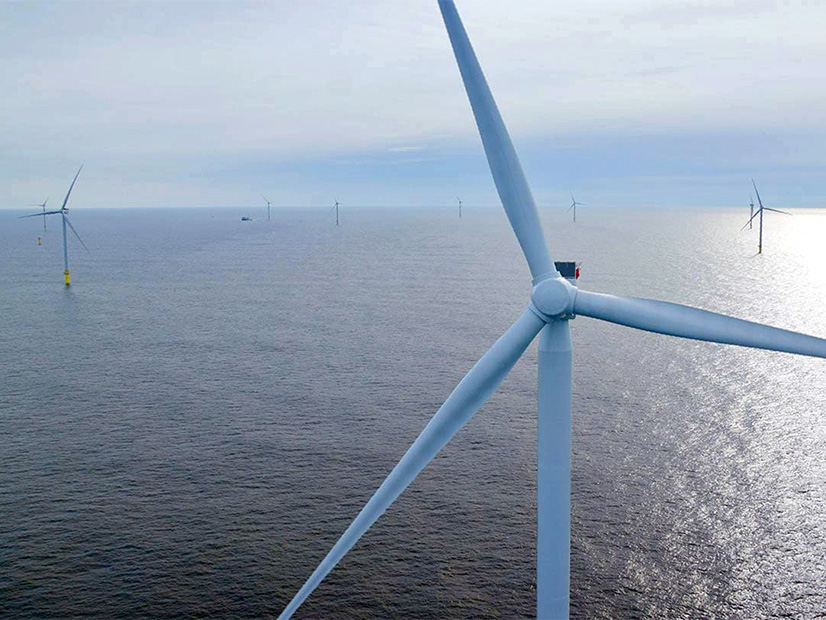Eversource Energy’s exit from the offshore wind business drove a $118 million loss in the third quarter of 2024, offsetting increased revenue from its electric and gas distribution business relative to 2023, the company announced to investors Nov. 5.
The company had been working to sell its 50% share in the South Fork and Revolution Wind projects since 2022 and finalized its sale of the projects to Global Infrastructure Partners at the end of September. But that came at a $524 million net loss, executives said. (See Eversource Takes Another Financial Hit with OSW Exit.)
CFO John Moreira said the loss includes “approximately $365 million related to obligations under the sale terms with GIP,” encompassing “costs associated with the previously announced delay to the in-service date and higher projected construction costs with Revolution Wind.”
CEO Joe Nolan emphasized that the company is pivoting to being a “pure-play, regulated pipes and wires utility” and preached caution for the company moving forward.
“We are not going to swing for the fences anymore; we’re looking for the singles and the doubles in the regulated space,” Nolan said. “I don’t want anyone to worry that we are going to go and propose a transmission line to Canada as a merchant project.
“We are a leader in the clean energy transition, with tremendous regulated opportunities ahead of us,” he added. “As the largest utility in New England, Eversource is well positioned to meet our states’ mandated clean energy goals.”
Nolan emphasized the opportunities the company expects to see for distribution investments, along with transmission investments to interconnect new generation projects. He specifically praised Massachusetts’ electric sector modernization plan (ESMP) process, in which utilities must submit five- and 10-year plans to meet the needs of the clean energy transition. (See Mass. DPU Approves 1st Round of Utility Grid Modernization Plans.)
The stakeholder engagement process for the ESMPs, which included significant discussions before the utilities filed the final plans, enabled Eversource to submit its plan with the support of key stakeholders, Nolan said.
The Massachusetts Department of Public Utilities’ approval of the final plans received a more mixed reaction from climate and consumer advocates, with several groups arguing the plans should take a more systemwide approach.
Nolan said Eversource’s plan will enable the company to make an incremental $600 million in distribution investments and increase electrification capacity by more than 180%.
“This plan is the roadmap for clean energy in the state, and we believe it can become the model blueprint for the nation,” Nolan added.
Investors asked Nolan for his perspective on a potential deal in which Massachusetts or other New England states would purchase power from the Millstone Nuclear Power Plant, currently propped up by a contract with Connecticut.
Massachusetts officials have expressed their hope that Connecticut will join the recent multistate OSW procurement, as the state’s participation may be needed for the viability of the proposed 1,200-MW Vineyard Wind 2 project, from which Massachusetts has committed to buying up to 800 MW. (See Multistate Offshore Wind Solicitation Lands 2,878 MW for Mass., RI.)
Nolan said he has been “involved only to the extent that I understand their objectives. … I have only been privy to the fact that everybody is trying to bring something to the table.
“There’s a very strong working relationship between Rhode Island, Connecticut and Massachusetts when it comes to clean energy,” Nolan added. “I am confident that they will come to a decision or a solution that is beneficial to all customers in New England.”
Eversource officials continued to express concern about Connecticut’s regulatory environment. Utility executives have repeatedly expressed concern about cost recovery in the state under the leadership of Connecticut Public Utilities Regulatory Authority Chair Marissa Gillett.
The state’s electric utilities have particularly taken issue with PURA’s approach to implementing performance-based regulation. (See The Rocky Road to Performance-based Regulation in Connecticut.) In May, Eversource announced its plans to remove about $500 million in investments from the state. (See Eversource Announces $500M Cut in Connecticut Investments.)
Nolan told investors that he would reinvest the money in the state if “they decide they want to provide timely cost recovery and follow legal standards.” But he added that “there’s no shortage of opportunities for investment that give us timely recovery of our costs” in New Hampshire and Massachusetts.
He also expressed some concern about capital recovery in PURA’s proposal for deploying advanced metering infrastructure (AMI) in the state. “We are hopeful that the final decision will provide a clearer path to allow us to make this important investment for our customers.”



